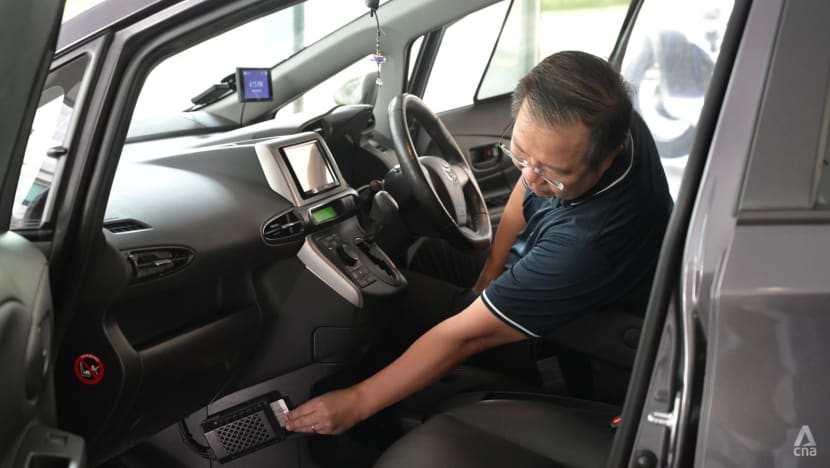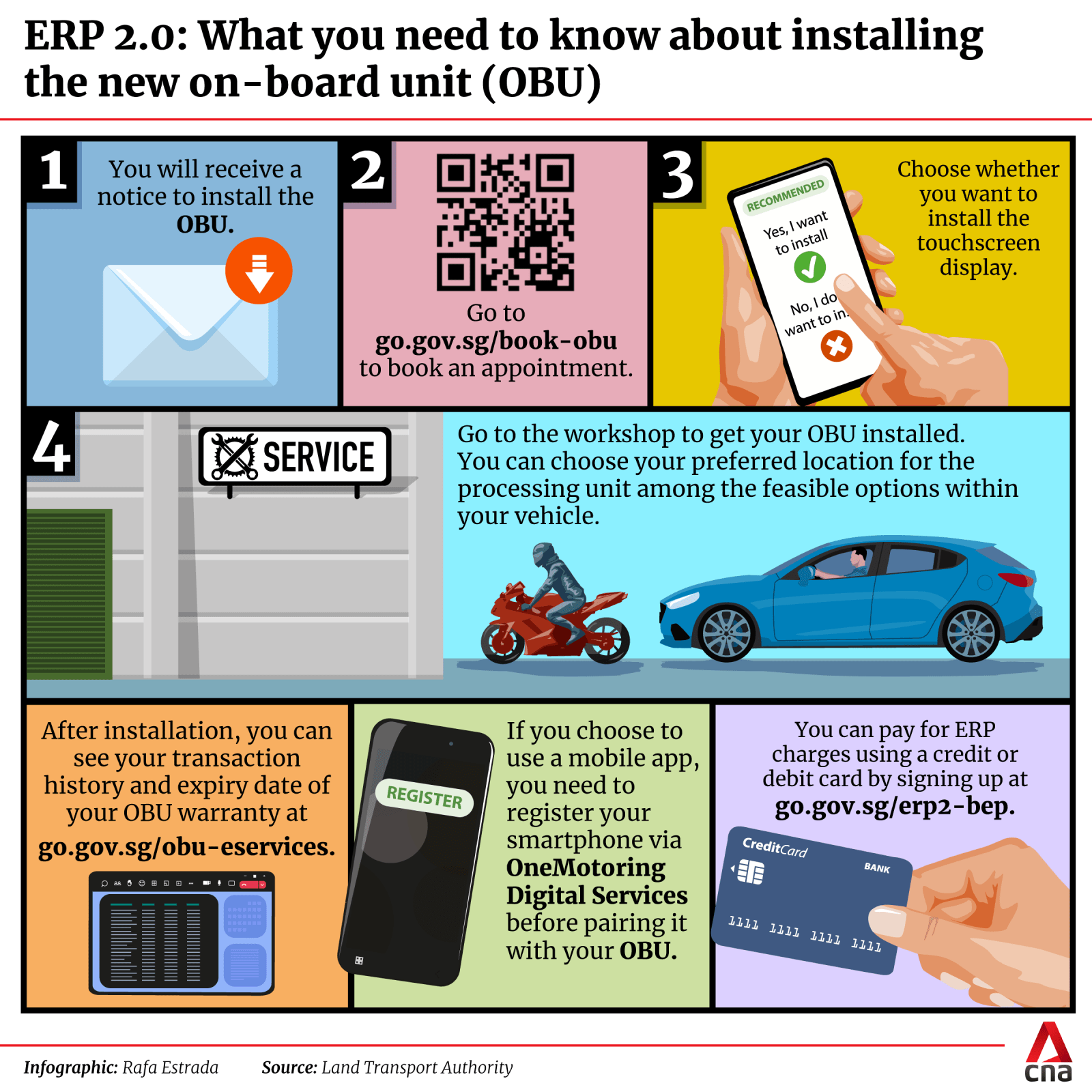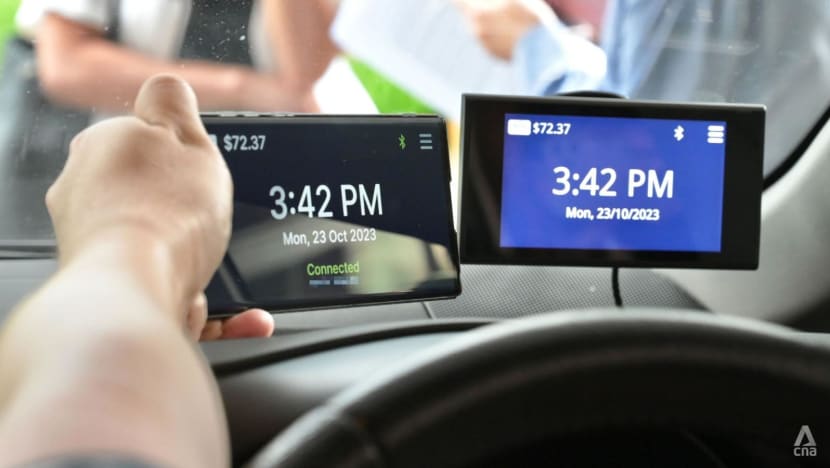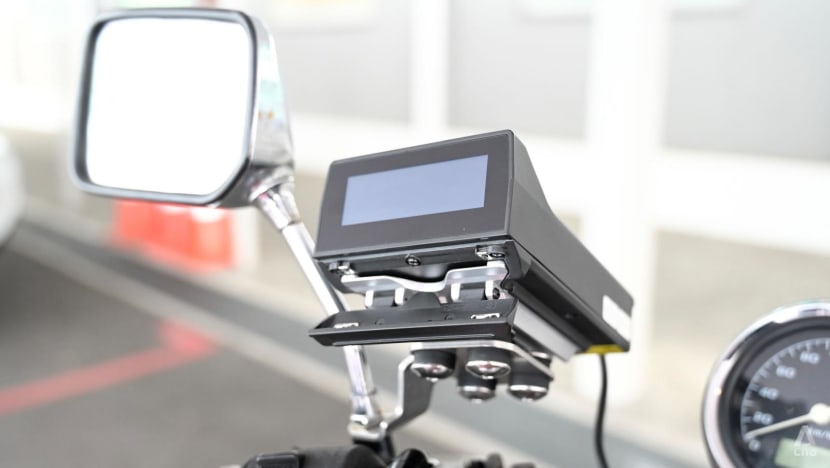'Too inconvenient': Motorists complain about ERP 2.0 card reader but welcome changes in installation process
Two drivers who have the new on-board units asked if they would be allowed to shift the placement of their card reader.

The processing unit containing the payment card is installed on the front passenger's side. (Photo: CNA/Hanidah Amin)

This audio is generated by an AI tool.
SINGAPORE: Motorists using the ERP 2.0 system have complained about the placement of the card reader, which they say makes it difficult for them to take out their CEPAS card.
These motorists are early users of Singapore's new Electronic Road Pricing system, known as ERP 2.0, which will be satellite-based and can detect if a vehicle is in a congested area.
Installation started in November last year, with more than 13,000 vehicles fitted with the new on-board units (OBU) so far.
About 75 per cent are company vehicles such as buses and motorcycles, said the Land Transport Authority (LTA). Some cars that are part of rental fleets have also had the OBU installed.
The next phase of installation begins next month, when motorcycle owners will be progressively notified of their OBU installation. All new vehicles registered from May 1 will also come with the new unit.
CNA spoke to two drivers who have had the new units in their vehicles for at least a month, and a motorcyclist who had it installed last week.
While the drivers complained about the card reader placement and the touchscreen display's size, they welcomed LTA's announcement last month that it would implement changes in the installation process following feedback from early adopters.
These changes include allowing drivers to temporarily deactivate their CEPAS card using the touchscreen. This came after complaints that the card reader, which was installed in the passenger footwell or under the glove compartment, was too difficult to reach.
Drivers can also choose where to install the card reader, although it has to be technically feasible. Previously, a workshop technician would decide where to place the unit.
All new vehicles registered from May 1 will come with the ERP 2.0 system’s on-board unit (OBU) already installed, said the Land Transport Authority (LTA). CNA's Grace Yeoh had an ERP 2.0 on-board unit installed to try it out. Here's how it went.
A driver who wanted to be known as Mr Kwek said the card deactivation button would be helpful.
“It’s way too inconvenient,” he said about his card reader, which is located under the glove compartment. “This makes accessing the card difficult ... I have to reach over.”
The 46-year-old, who works in the public health sector, wondered if he would be allowed to change the location of his card reader.
"If I had those options available to me at the time of installation, that (would) be great."
Even if he could return to the workshop to move his card reader, Mr Kwek said he would have to take time off work to get it done.
LTA previously said that the initial installation would be free for those who complete it within the two-month period stated in its letter. Charges could apply for those who want to change anything after the installation.
The deactivation button will be rolled out as a software update and those who already have the touchscreen display do not need to take any action.

Mr Kwek had the new OBU installed in February. He does not know why he received a letter from LTA in December to change to the ERP 2.0 unit although he does not drive a company or rental car.
Private-hire driver Madam Zuraidah Ghani, 54, had it installed in December last year. She welcomed the news that drivers can choose where to install the card reader.
Her unit is mounted in the front passenger footwell, on the driver's left side, and she finds it inconvenient and difficult to reach.
On one occasion, she was trying to exit from a car park, but her card could not be detected. She had to stretch over to remove the card from the unit so that she could tap it on the reader at the exit.
“I had to find a place to stop my vehicle to slot the card back in,” she said.
OTHER FEEDBACK
Mdm Zuraidah also said the touchscreen display, which is on the right-hand side of the vehicle's dashboard, blocks her view.
“I (can) hardly see the curb when turning the car,” she said.
She would have preferred to install it at the centre of the dashboard, but the mechanic told her that it had to be installed on the right-hand side.
LTA has since said that vehicle owners can choose where to place the touchscreen display.
Last October, LTA also said car owners can opt out of installing the touchscreen display and use a mobile application on their phone instead.

The touchscreen shows when money has been deducted, but also provides information such as when the vehicle is approaching a school zone or silver zone.
Motorcycles are fitted with a single-piece OBU similar to the in-vehicle unit (IU) under the old ERP system.
Civil servant Nuriman Md Shariff, 53, had the new unit installed on his bike after his IU broke down.
He estimates that the new display is twice the height of the old IU, and blocks some information on his bike's display, such as revolutions per minute. This bothered him a bit, but he can still see the data if he moves his head.

The touchscreen on motorcycles displays the date and time, IU number and CEPAS card balance. But it is of “no significant use” for riders, Mr Nuriman said. “I prefer the old one (because) of its sleek design.”
He also wondered why the same “three-in-one” OBU system for motorcycles could not be implemented for cars.
"I don't understand why for cars, they must use three components," he said.
LTA said on its website that the three-piece unit provides "additional functionalities" and improves performance in warm weather conditions. There will also be flexibility in replacing individual parts, LTA said.

















